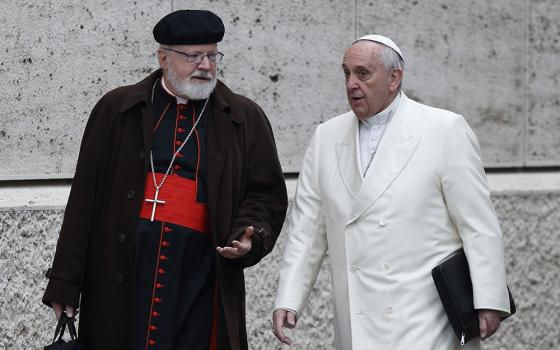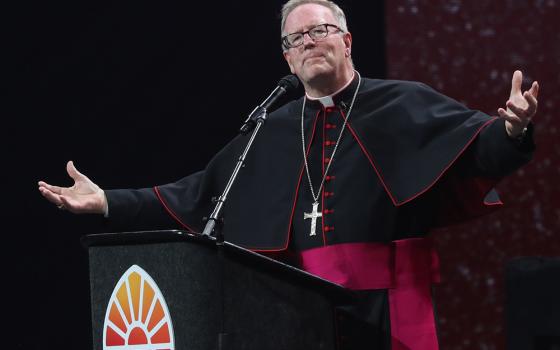Migrant farmworkers with H-2A visas harvest romaine lettuce in King City, Calif., April 17, 2017. (CNS/Reuters/Lucy Nicholson)
Ahead of World Refugee Day June 20, the U.S. bishops were told that many U.S. worship sites — from chapels to cathedrals — seem to be unaware of those Catholics near them who are refugees, immigrants, migrants and other "people on the move."
"There is a widespread lack of awareness of the presence of the communities by Catholic worship sites," said Bishop Joseph J. Tyson of Yakima, Washington, chairman of the U.S. bishops' Subcommittee the Pastoral Care of Migrants, Refugees and Travelers during a June 18 session. It was the last day of the bishops' three-day spring meeting, conducted entirely online.
The subcommittee contracted with the Center for Applied Research in the Apostolate to conduct a survey of U.S. worship sites — and a parallel questionnaire for diocesan chancellors — to collect data on the movement of Catholics throughout the country.
The center found the archdioceses of Los Angeles, Miami, Seattle, Atlanta and Galveston-Houston are among those U.S. archdioceses with the greatest number of people passing through their territories, Tyson said.
"Are they aware of their presence?" he asked. "What about Catholic tourists? How do parishes serve the many Catholic workers who pass through?" And what, he added, of "the victims of trafficking who many not have anyone to turn to?"
"CARA has identified numerous gaps in the presence of communities and the church's awareness of these," Tyson said in a prerecorded message.
Jesuit Fr. Thomas Gaunt, the center's executive director, said the response rate on surveys sent to nearly 20,000 worship sites was 12% — lower, he noted, than the 15% response rate in the center's typical surveys.
"The most common reaction from nonresponding pastors was that they were not aware of any of the communities the inventory inquired about in their parish boundaries: 'How do we do the survey if we don't have any of these communities present?'" Gaunt said in a separate recorded message.
"This became one of the findings of the survey."
Gaunt displayed a series of U.S. maps with counties shaded in red containing at least 150 members from one of many different foreign-born populations.
"There are many communities for which no worship site reported the presence of these communities," he said. "Red ZIP code zones, but no black dots" denoting a worship site that caters to a particular community.
There are "many communities of which the worship sites seem to lack awareness," Tyson said, adding he hopes they will develop initiatives "to draw them closer to Christ and the church."
The General Social Survey, he said, found that "four in 10 of [the] foreign-born residing in the United States self-identify their religion as Catholic."
The study, "Ministry to Migrants, Refugees and Itinerant People: The Catholic Worship Site Inventory," was to be released by the center after its presentation to the bishops.
The center said the largest number of "people on the move" are tourists and pilgrims, with an estimated population of 79.6 million. Communities of people without documents came next at 10.5 million, followed by long-haul truck drivers at 3.5 million.
Some populations identified by the center whose size is not known were family members of immigrants in ICE immigrant detention centers; people working in traveling shows such as circuses, carnivals, racetracks and rodeos; and the Roma and Irish Traveler population.
More sites — 272 — tended to communities of those without documents, followed by 256 for tourists and pilgrims and 219 for migrant farmworkers.
Advertisement




